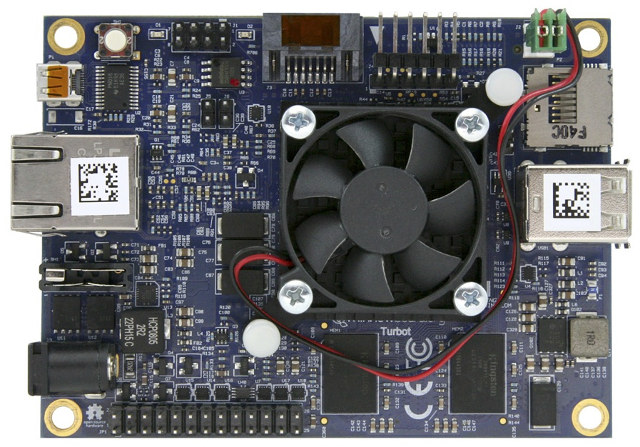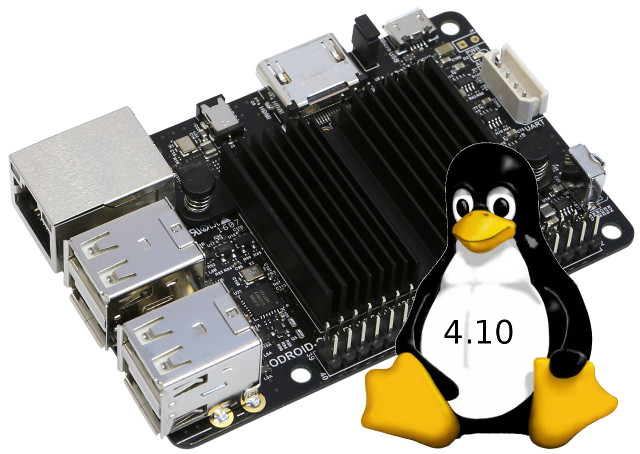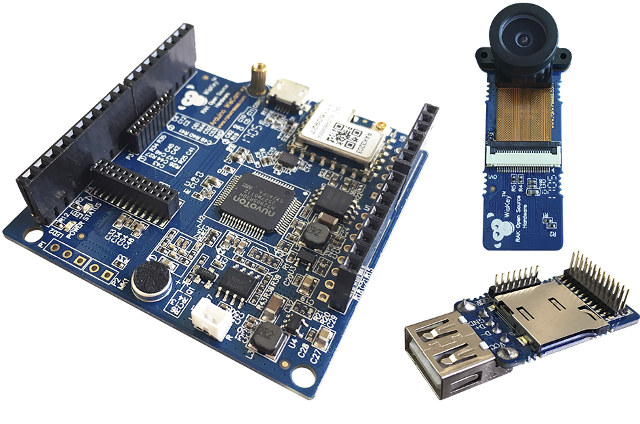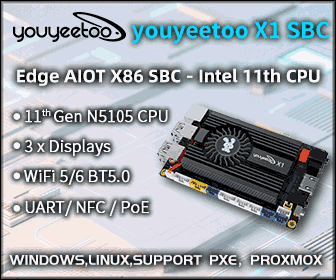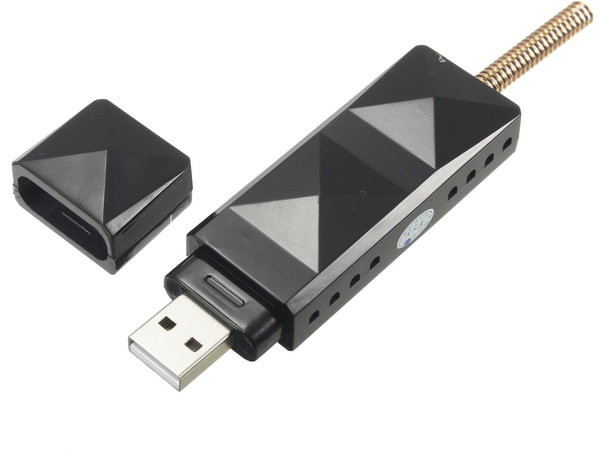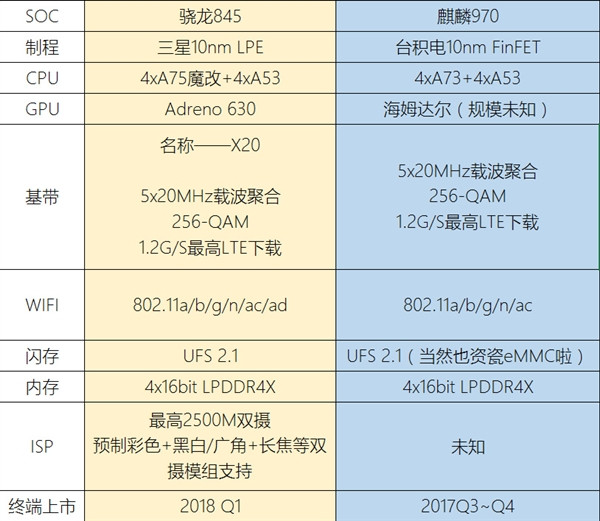This is a guest post by Leonardo Graboski Veiga, Field Application Engineer, Toradex Brasil Introduction Computer vision (CV) is everywhere – from cars to surveillance and production lines, the need for efficient, low power consumption yet powerful embedded systems is nowadays one of the bleeding edge scenarios of technology development. Since this is a very computationally intensive task, running computer vision algorithms in an embedded system CPU might not be enough for some applications. Developers and scientists have noticed that the use of dedicated hardware, such as co-processors and GPUs – the latter traditionally employed for graphics rendering – can greatly improve CV algorithms performance. In the embedded scenario, things usually are not as simple as they look. Embedded GPUs tend to be different from desktop GPUs, thus requiring many workarounds to get extra performance from them. A good example of a drawback from embedded GPUs is that they are […]
MinnowBoard Turbot Quad Core Open Source Hardware Board is now Shipping for $190
MinnowBoard Turbot Quad Core board was announced last autumn, with shipping expected in December 2016, but there may have been delays as the MinnowBoard foundation has just announced that the Intel open source hardware board is now shipping. MinnowBoard Turbot Quad “MBT-4220” board specifications: SoC – Intel Atom E3845 quad core Bay Trail-I processor @ up to 1.92 GHz with Intel HD graphics @ 542 / 792 MHz (10W TDP) System Memory – 2GB DDR3L 1067 MT/s (Soldered) Storage – 1x SATA2 3Gbps, 1x micro SD card slot, 8 MB SPI Flash for firmware (Tianocore UEFI, Coreboot, SeaBIOS) Video & Audio Output – 1x micro HDMI connector Connectivity – 10/100/1000M Ethernet RJ-45 connector (with Intel i211 instead of Realtek NIC on dual core MinnowBoard) USB – 1x USB 3.0 host, 1x USB 2.0 host Debugging – Serial debug header Expansion headers Low-speed expansion (LSE) port – 2×13 (26-pin) male 0.1″ […]
ODROID-C2 Board Gets Experimental Ubuntu 16.04 Armbian Images with Linux 4.10
Hardkernel is doing a good job at providing working images with GPU / VPU support, and documentation for their ODROID boards. But while Exynos based ODROID-XU4(Q) boards already get firmware images with a recent Linux 4.9 kernel, Amlogic S905 based ODROID-C2 board’s Ubuntu 16.04 images still rely on the Linux 3.14 kernel released by Amlogic, plus various patchsets. But we’ve seen BayLibre is working on a Linux mainline port for Amlogic processors, and Armbian community appears to have leveraged that work, and added Ubuntu 16.04 Server and Desktop images with Linux 4.10 to their build system. Those are experimental nightly builds so they may not have been tested, and it’s likely not working as well as the Ubuntu 16.04 “legacy” images released by Hardkernel. They are also not shown in Armbian ODROID-C2 page at the time of writing, but it’s a step in the right direction.
ARM Chromebooks Run Android Apps Better, Exhibit Longer Battery Life than Intel Chromebooks (Study)
Google has been working on supporting Android apps and the Play Store on Chromebooks, which are normally sold with either ARM or Intel processors. So the ability to run Android apps well is one of the things to consider before purchasing a Chromebook. Shrout Research has published a paper entitled “Chromebook Platform Choice Important for Android App Performance” comparing an Acer Chromebook R13 with a Mediatek MT8173C ARM Cortex A72/A53 processor to Acer Chromebook R11 with an Intel Celeron N3060. The Intel Chromebook has a smaller resolution so this could be an advantage, so less resources are needed to update the display. However, the ARM processor is significantly more powerful than the Intel one according to GeekBench results, and Chromebook R13 is sold for $399 on Amazon US, while Chromebook R11 goes for $299 (and lower during promotions). So it’s not a perfect comparison, but it should give an idea […]
RAK WisCam is a $20 Arduino Compatible WiFi Camera Linux Board Powered by Nuvoton N32905 ARM9 Processor
A couple of weeks ago I wrote about Rakwireless’ RAK CREATOR Pro development board based on Realtek Ameba RTL8711AM Wireless MCU, and part of their Wiskey family of development boards. Sub-family include WisNode for IoT boards, WisAP for OpenWrt boards, WisPLC for PLC hardware, and WisCam for WiFi video camera boards. The company has recently introduced Wiscam RAK5281 Arduino compatible Linux board powered by a Nuvoton ARM9 MCU, and supporting a camera module or an SD card + USB module. RAK WisCam specifications: SoC – Nuvoton N32905R3DN ARM926EJ processor @ 200 MHz with 8KB internal SRAM, 16KB IBR internal booting ROM, 16Mbit x16 DDR2 memory Storage – 128 MBit SPI flash, included sub-module adds micro SD card Connectivity – 802.11 b/g/n WiFi via Realtek RTL8189FTV module Camera via sub-module 648×488 pixel VGA CMOS Image Sensor (GC0308); 102° FOV Video – QVGA (320×240) 30FPS, VGA(640×480) 30FPS, MJPEG encoding Photo – JPEG, […]
8Power Vibration Energy Harvesting Technology Powers Batteryless LPWAN GPS Trackers, MEMS Sensors
While IoT products usually promises one to 10 years battery life, they will be several billions of them, and ARM’s CEO even forecast one trillion IoT devices in the next 20 years. Recharging batteries at home may be fine, but imagine having to recharge or replace batteries on top of electric poles, inside walls, in remote locations, and other hard to reach places, considerable resources would have to be deployed just to replace or recharge battery every year or whenever the battery is close to being depleted. That’s why work on energy harvesting technology for batteryless devices may be so important, and 8Power is one of the companies working in the field through their vibration energy harvesting technology that is said to harvest up to 10x the power of competing devices under comparable condition thanks to the use of parametric resonance phenomenon. The company has recently announced their Track 100 family […]
This $8 USB Transceiver Can Add 433 MHz Device Support to your Home Automation Gateway
With the advent of WiFi and Bluetooth IoT, 433 MHz devices are becoming less popular but are still used for doorbells, motions sensors, windows/door sensors, etc… If you have such devices at home, one way to integrate those into your home automation system is to use an ESP8266 WiFi to 433 Mhz bridge between your gateway and 433 MHz capable products. However, you don’t even need the middleman if you use a USB 433 MHz transceiver connected directly to the gateway. Nathan Chantrell found such USB dongle on Banggood for about $8, and managed to make it work with his Debian Gateway using Node-RED. 433 MHz USB dongle and features: Connectivity 433 MHz transceiver Range – up to 30 to 100 meters (Line of Sight) Tx and Rx for PT2262, PT2260, PT2264, PT2240, EV1527, HS2303-PT codes Can transmit multiple signals independently Control interface – Serial over USB @ 9600 bps […]
Qualcomm Snapdragon 845 Octa-core Processor To Feature ARM Cortex A75 Cores (Reports)
According to reports from China, Qualcomm’s next application processor (or rather mobile platform) will be Snapdragon 845, and if accurate, the comparison table below between the Snapdragon processor and Hisilicon Kirin 970 SoC shows the former will be powered by some customized (魔改) version of yet-to-be announced ARM Cortex 75 cores. Snapdragon 845 octa-core processor will be manufactured using Samsung 10nm LPE processor, come with four custom Cortex A75 cores, four Cortex A53 cores, an Adreno 630 GPU, and an LTE X20 modem supporting LTE Cat 18 for up to 1.2 Gbps download speed. Other features like 802.11ad (High bandwidth, short range WiFi), UFS 2.1, and LPDDR4X were already found on earlier model. I’ve been unable to find further details about ARM Cortex A75 right now, and we have to wait until ARM Techcon 2017 before getting more details. Mobile phones powered by Snapdragon 845 are supposed to start shipping […]



